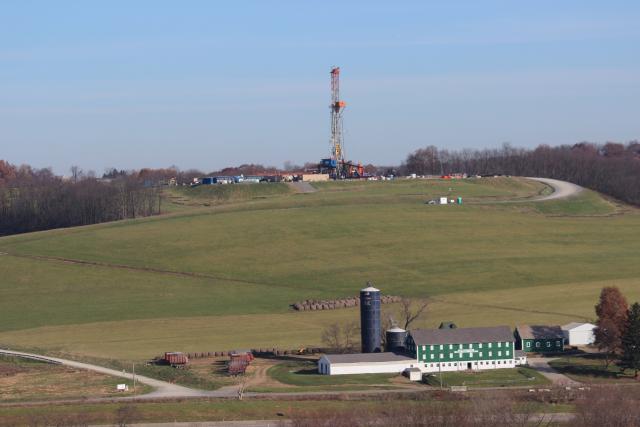
PennEnergy believes the Marcellus core extends north of Pittsburgh into Butler, Beaver and Armstrong counties in Pennsylvania. Range Resources helped kick off the play. (Source: PennEnergy Resources LLC)
Western culture fairy tales often end with, “And they all lived happily ever after.” Grownups know that this doesn’t happen in real life. People are not intended to live happily ever after. We have mortgage payments and car payments and kids who want us to put them through college.
But these stories have important elements: plot, characters, setting, point of view, theme, etc. It’s the makeup of any good narrative. This is where I think geoscience and literature meet.
A good geoscience story might not have all of these elements, although I’m sure characters are involved along the way. But good geoscience stories have the “plot” of depositional history and tectonic stresses, which in turn lead to the “themes” of source, trap, seal, compartmentalization, etc. And they end up, hopefully, with a story that has a happy ending (at least for the geoscientists—the production engineers might be telling a different tale).
So here are a few of my favorite bedtime stories. Range Resources commercialized the Marcellus Shale through large-scale slickwater fracturing and horizontal drilling. The company became interested in shows that it was fi nding while drilling to deeper targets.
Using the then-hot Barnett as a guide, Range put together an aggressive land position, especially in the “sweet spots” of the play in southwestern and northeastern Pennsylvania. Unlike its conventional counterparts, Range tried fracturing patterns that were unheard of in those days. By using a Barnett-scale frack design, the company unlocked an entirely new shale play.
In another example, Erik Oswald, vice president of exploration Americas for ExxonMobil, told a story at the recent European Association of Geoscientists and Engineers conference about the company’s Liza discovery in the deep waters offshore Guyana. In the late 1990s the company’s geologists were trying to work out the plate confi guration in the Caribbean Sea and developed a story that indicated that source rocks might have built up offshore Guyana. A regional seismic line led them to believe this story might be true.
The company leased a considerable amount of acreage, but its development plans were delayed because of a border dispute. But after acquiring additional seismic, it drilled a discovery well in May 2015. Ultimately, ExxonMobil acquired 17,000 sq km (6,564 sq miles) of seismic while continuing to drill up and develop the fi eld.
Overall, the company arrived at its fi nal investment decision two years after the discovery, and it expects fi rst oil within four years.
And of course there’s the classic Barnett Shale story, where George Mitchell and one of his engineers, Nicholas Steinsberger, refused to give up on their dream of unlocking a shale play that obviously held vast reserves but wouldn’t give them up easily. Mitchell’s “story” arguably changed the energy industry forever.
I’d like to tell more of these stories. If you have a good one, please share!
Recommended Reading
Chevron Hunts Upside for Oil Recovery, D&C Savings with Permian Pilots
2024-02-06 - New techniques and technologies being piloted by Chevron in the Permian Basin are improving drilling and completed cycle times. Executives at the California-based major hope to eventually improve overall resource recovery from its shale portfolio.
Orange Basin Serves Up More Light Oil
2024-03-15 - Galp’s Mopane-2X exploration well offshore Namibia found a significant column of hydrocarbons, and the operator is assessing commerciality of the discovery.
E&P Highlights: April 15, 2024
2024-04-15 - Here’s a roundup of the latest E&P headlines, including an ultra-deepwater discovery and new contract awards.
US Gas Rig Count Falls to Lowest Since January 2022
2024-03-22 - The combined oil and gas rig count, an early indicator of future output, fell by five to 624 in the week to March 22.
E&P Highlights: March 15, 2024
2024-03-15 - Here’s a roundup of the latest E&P headlines, including a new discovery and offshore contract awards.




